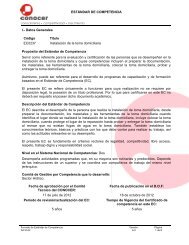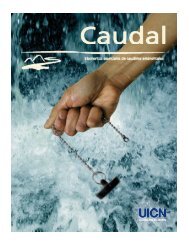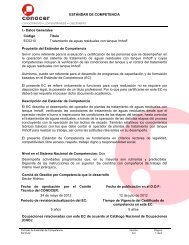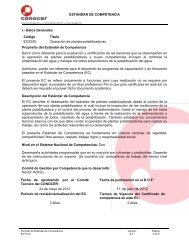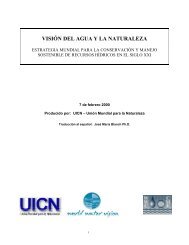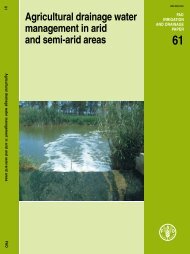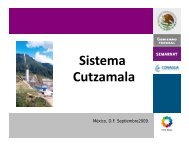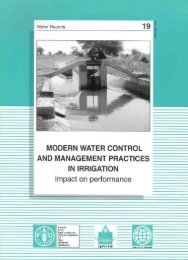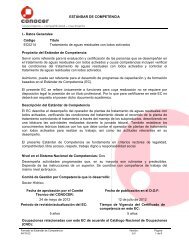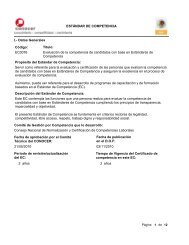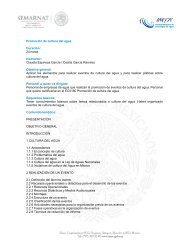An Assessment of the Status of Biodiversity in the ... - IUCN
An Assessment of the Status of Biodiversity in the ... - IUCN
An Assessment of the Status of Biodiversity in the ... - IUCN
You also want an ePaper? Increase the reach of your titles
YUMPU automatically turns print PDFs into web optimized ePapers that Google loves.
SummaryThe Maduganga estuary and mangrove islets are a complex coastal wetland ecosystem situated<strong>in</strong> <strong>the</strong> Galle District <strong>of</strong> Sou<strong>the</strong>rn Sri Lanka. The total area <strong>of</strong> <strong>the</strong> estuary is 915 ha, <strong>of</strong> which770 ha consist <strong>of</strong> open water, while islands account for 145 ha. With <strong>the</strong> view <strong>of</strong> safeguard<strong>in</strong>g<strong>the</strong> ecological functions, resources and values <strong>of</strong> <strong>the</strong> Madu ganga estuary for conservation andfuture sustenance <strong>of</strong> biodiversity, <strong>IUCN</strong> Sri Lanka carried out a systematic assessment <strong>of</strong>biodiversity dur<strong>in</strong>g a six-month period, from May to October 2000. Field monitor<strong>in</strong>g <strong>of</strong> faunaand flora was carried out at fortnightly <strong>in</strong>tervals, <strong>in</strong> a systematic manner, us<strong>in</strong>g scientificallyaccepted biodiversity assessment techniques. A zon<strong>in</strong>g exercise was carried out accord<strong>in</strong>g toecological significance and threats to biodiversity, us<strong>in</strong>g appropriate <strong>in</strong>dicators.The survey revealed that <strong>the</strong> Maduganga wetland consists <strong>of</strong> 10 major wetland vegetationtypes. These vegetation types harboured a total <strong>of</strong> 303 species <strong>of</strong> plants belong<strong>in</strong>g to 95families. The total plant species <strong>in</strong>cluded 19 endemics, 8 nationally threatened species and 9<strong>in</strong>vasive alien species. Based on <strong>the</strong> extent <strong>of</strong> occurrence (ha), mangroves and mangrove mixedswamps were <strong>the</strong> dom<strong>in</strong>ant wetland vegetation types <strong>in</strong> Maduganga. In addition to <strong>the</strong>sewetland vegetation types, three major terrestrial vegetation types are also found <strong>in</strong> <strong>the</strong> islandsand <strong>the</strong> surround<strong>in</strong>g ma<strong>in</strong>land area <strong>of</strong> <strong>the</strong> Maduganga estuary. Perennial crops (ma<strong>in</strong>lyc<strong>in</strong>namon) dom<strong>in</strong>ated <strong>the</strong> terrestrial vegetation types. A total <strong>of</strong> 98 plant species were recordedfrom <strong>the</strong> multi-species home gardens. When consider<strong>in</strong>g <strong>the</strong> species richness <strong>of</strong> flora <strong>in</strong>different wetland vegetation types, mangroves harboured <strong>the</strong> highest number <strong>of</strong> species,closely followed by mangrove mixed swamps. Maduganga estuary harbours a small population<strong>of</strong> a very rare, threatened mangrove species - Lumnitzera littorea. A total <strong>of</strong> 248 species <strong>of</strong>vertebrate fauna, belong<strong>in</strong>g to 121 families were recorded from Maduganga. These <strong>in</strong>cluded20 species (8 %) <strong>of</strong> endemics, while 30 species (12 %) are nationally threatened. The nativevertebrate fauna <strong>of</strong> Maduganga represents 30% <strong>of</strong> Sri Lanka’s native <strong>in</strong>land vertebrate species.Maduganga, perhaps one <strong>of</strong> <strong>the</strong> last rema<strong>in</strong><strong>in</strong>g tracts <strong>of</strong> prist<strong>in</strong>e mangrove forest <strong>in</strong> Sri Lankawith a rich biodiversity, now appears to be threatened with <strong>the</strong> same predicament that many <strong>of</strong><strong>the</strong> island’s mangroves now f<strong>in</strong>d <strong>the</strong>mselves <strong>in</strong>, ow<strong>in</strong>g to <strong>in</strong>creas<strong>in</strong>g human activity. At present,this wetland is not a protected area under any Government Department. Therefore, it isenvisaged that <strong>the</strong> f<strong>in</strong>d<strong>in</strong>gs <strong>of</strong> this survey will contribute to <strong>the</strong> conservation <strong>of</strong> this uniquecoastal wetland.Key words: Maduganga mangrove estuary, biodiversity, threats1



